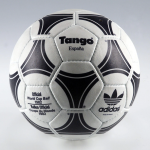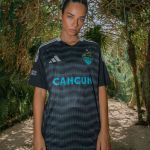
All balls designed by adidas for the World Cup
In addition to the Champions League, the German brand also signs the balls of the world's most famous competition
April 2nd, 2022
Each World Cup is a story in itself, with its own stories, matches and characters. What makes a competition like this so much, however, are all the endless details that help create it, including all those that determine the aesthetics of each World Cup. We are talking about the shirts, of course, the stadiums, the players, but also one of the most sacred objects of the sport: the ball. Throughout all the editions of the World Cup, in fact, we have progressively witnessed the evolution of the design, materials, performance and iconography behind this object.
While the 1970 and 1974 editions focused on simplicity with the usual black and white hexagonal ball, for many years, exactly from 1978 to 1998, the distinctive features of the host countries were represented within the triangular shapes of the legendary adidas Tango, which survived six editions of the World Cup. Since the 2002 World Cup in Korea and Japan, however, the balls have come to represent the countries hosting the World Cup. From the Fevernova - one of the best footballs ever made - to the Brazuca of 2014, via Teamgeist, the ball of the magical summer of 2006, and the Jabulani of the first tournament played on African soil, to the Telstar of Russia 2018, inspired by the past, just like many of the new Three Stripes kits. The graphics on the ball, in fact, are an explicit reference to those used in the 1960s and 1970s. Another peculiarity that has distinguished the balls from 2006 onwards is that the German brand has started to make an alternative version to the original used exclusively for the final. A bit like in the Champions League, where adidas sponsors the competition, some of the most characteristic elements of the ball are transformed into gold.
And now, just a few months before the World Cup kicks off in Qatar, Al Rihla, the fourteenth ball created by adidas for the FIFA World Cup, has been unveiled. Each component has been designed with the environment in mind: Al Rihla is the first World Cup ball to be made exclusively from water-based inks and glues. Al Rihla is the first World Cup ball to be made exclusively from water-based inks and glues. Translated into Arabic for 'journey', Al Rihla was inspired by architecture, typical boats and the Qatari flag. The launch date will mark the beginning of Al Rihla's journey to 10 cities around the world, where adidas will promote a series of initiatives to improve access and equality in local sporting communities.
Maybe it's because, even if the years pass, the protagonist of football always remains the same: the ball.
































